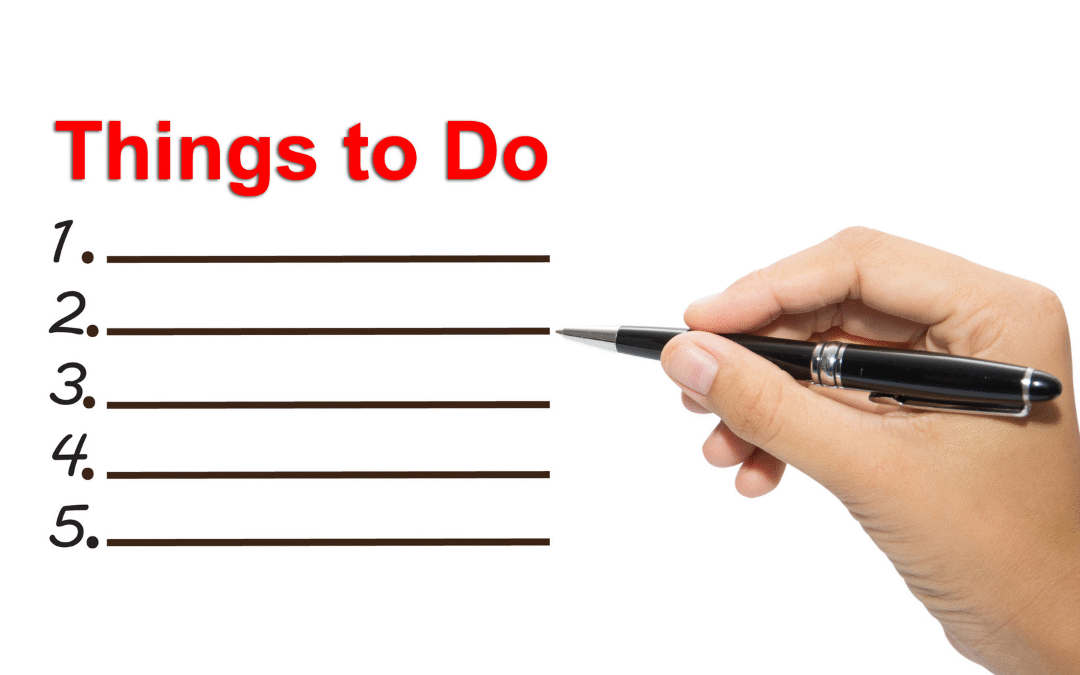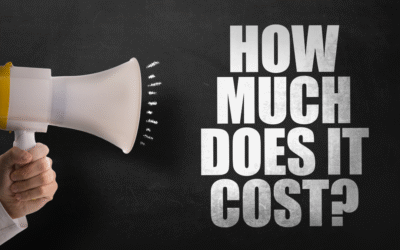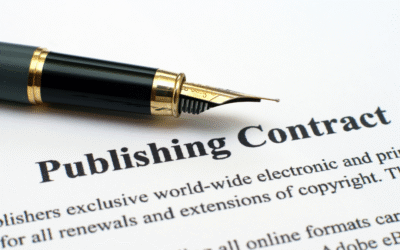Over the years, I have navigated the intricate journey of turning a manuscript into a book available on bookstore shelves. In this guide, I’ll break down the entire publishing process step-by-step, so you can understand not only the imperative stages involved but also the potential pitfalls to avoid and the positive outcomes you can achieve. Whether you’re a first-time writer or seasoned author, my goal is to equip you with the knowledge needed to successfully share your work with the world.
Key Takeaways:
- Manuscript Preparation: The first step in the publishing process involves drafting and refining your manuscript, ensuring it is polished and ready for editors.
- Publishing Options: Authors can choose between traditional publishing or self-publishing, each with its own advantages and challenges, impacting distribution and marketing strategies.
- Marketing and Promotion: Effective marketing strategies are vital for a book’s success, including online presence, book launch events, and engaging with readers through social media.
Understanding the Publishing Process
Your journey as a writer takes you through multiple stages in the publishing process. From conceptualizing your idea to holding your book in your hands, it is necessary to grasp every step involved. The publishing process can be intricate and sometimes overwhelming; however, I am here to demystify it for you. Understanding the various paths—be it traditional, self-publishing, or hybrid—is crucial as it directly impacts how your work is presented to the world.
How to Develop Your Manuscript
On this journey of developing your manuscript, it is vital to focus on clarity, coherence, and creativity. Structure your chapters, build compelling characters, and ensure a captivating narrative flow. Do not forget, this is the foundation upon which your book will stand. The more meticulously crafted your manuscript, the more appealing it will be to potential publishers or readers.
Tips for Editing and Proofreading
Clearly, editing and proofreading are critical stages in the publishing process. It’s where your work transforms into a polished piece ready for publication. Here are some necessary tips to enhance the quality of your writing:
- Take breaks to gain a fresh perspective.
- Read aloud to catch awkward phrasing.
- Consider professional help for an objective viewpoint.
- Keep an eye out for grammar and spelling errors.
Thou shouldn’t underestimate the power of this meticulous phase; it can make or break your book’s first impression.
Understanding the nuances of editing and proofreading transforms your manuscript into a masterpiece. Focus on clarity in your writing, ensure consistency in your characters, and maintain a compelling narrative. Employ tools like spell checkers while also looking out for common mistakes that software might miss. Share your manuscript with trusted friends for feedback. With each revision, you enhance the quality of your work.
- Utilize beta readers to gain valuable insights.
- Create a checklist for common errors.
- Stay objective and be willing to make changes.
Thou can’t afford to rush through this process; it is necessary for the success of your book.
Choosing the Right Publishing Route
Some authors find themselves at a crossroads when it comes to publishing their work. The choice between traditional publishing and self-publishing can significantly impact your book’s journey. Understanding the pros and cons of each route will help you make an informed decision that aligns with your goals, whether that’s gaining broader exposure, creative control, or financial returns.
Traditional Publishing vs. Self-Publishing
Choosing between traditional publishing and self-publishing can shape your entire publishing experience. Traditional publishing often offers a polished pathway with editorial support and distribution channels, whereas self-publishing provides you with complete control over the process, from cover design to marketing. Each choice has its merits and drawbacks, which warrant careful consideration as you move forward.
Factors Influencing Your Decision
To better evaluate your options, consider the following factors that may influence your decision:
- Your level of experience
- Desired level of creative control
- Potential for financial returns
- Your target audience
- The time you’re willing to invest in marketing
This comprehensive analysis will empower you to align your publishing route with your unique aspirations.
For instance, if you have a clear vision and want to maintain creative control, self-publishing might be a suitable option. However, if you’re seeking wider distribution and prestigious endorsements, traditional publishing could be a better fit. Your experience may also play a role; first-time authors might benefit from the support of traditional houses, while seasoned writers may prefer the autonomy of self-publishing. This reflection on your individual circumstances will be crucial in making a decision that resonates with your personal and professional goals.
Designing Your Book
Once again, I find myself at a pivotal stage in the publishing journey: designing your book. This is where your manuscript transforms into a visual masterpiece, ready to attract readers. From the cover art to the interior layout, every design choice contributes to your book’s overall appeal and professionalism. Getting these designs right can significantly impact sales and reader enjoyment, so it’s not a step to rush through.
How to Create an Attractive Cover
The first thing potential readers will notice is your cover. A well-designed cover should convey your book’s essence while enticing readers to pick it up. Focus on incorporating strong imagery and typography, and don’t forget to consider your target audience’s preferences, which can guide your design choices effectively.
Tips for Interior Formatting
For interior formatting, I emphasize the importance of a clean and professional layout. Pay attention to the following factors:
- Font choice
- Margin settings
- Line spacing
- Chapter headings
Knowing how to balance aesthetics with readability will make your book a pleasure to read.
Cover design is vital, but so is proper interior formatting. I ensure that my text is not only visually appealing but also easy to navigate. Keeping pages consistent throughout the book is key, as it reflects professionalism and care in your work:
- Consistent typeface
- Clear paragraph structure
- Effective use of white space
- Page numbering
Knowing these elements will help elevate your book from average to extraordinary.
Marketing Your Book
Unlike traditional publications, where marketing efforts are often left to the publisher, as an author, you must take an active role in promoting your work. Successful marketing involves a blend of online and offline strategies, targeting your audience through social media, book signings, and engaging promotional material. By developing a strong marketing plan, you can significantly increase your book’s visibility and sales.
How to Build Your Author Platform
Book your success by creating a robust author platform. This involves establishing an online presence through a dedicated website, active social media engagement, and email newsletters. Connecting with your audience and sharing your writing journey not only builds a loyal readership but also enhances your credibility.
Factors to Consider for a Successful Launch
There’s much to consider when planning your book launch for maximum impact. Key elements include:
- Timing: Release during optimal sales periods.
- Budget: Allocate funds for marketing tools and events.
- Audience Targeting: Know your ideal reader demographics.
Knowing the intricacies of a successful launch can set the tone for your book’s trajectory in the market.
Another crucial aspect is gathering a solid support network that can amplify your efforts. You should prioritize:
- Beta Readers: Seek feedback pre-launch to refine your message.
- Media Outreach: Build press contacts to further announce your debut.
- Promotional Events: Plan signings and readings to engage directly with readers.
Knowing these factors can significantly enhance your launch’s visibility and impact on your book’s success.
Navigating Distribution Channels
Many authors overlook the importance of understanding distribution channels. Successfully getting your book into the hands of readers requires strategic navigation of both traditional and online avenues. From engaging a distributor to managing direct sales through your website, knowing where to position your book is critical for achieving the best reach and sales. In this era, leveraging a mix of channels can help you access a wider audience and maximize profit while gaining the recognition your work deserves.
How to Get Your Book into Bookstores
An effective way to get your book into bookstores is to partner with a solid distributor. Begin by reaching out to independent bookstores and larger retail chains to present your book, focusing on your unique selling points. Offering promotional events, like author signings, can also create interest in your work. Building relationships with bookstore owners is vital; they often appreciate personal connections and are more likely to support local authors.
Tips for Online Sales Strategy
Online sales have become a significant component in today’s book market. I recommend focusing on social media marketing and developing your own author platform to engage potential readers. Here are a few key strategies:
- Create an engaging website to showcase your work
- Utilize social media to connect with your audience
- Leverage email marketing to keep readers informed about new releases
- Discounts and promotions can entice new readers
Thou must remember that consistent engagement is key to building your online presence.
The world of online sales can be both rewarding and challenging for authors. I encourage you to consider platforms that support self-publishing, such as Amazons KDP and IngramSpark. These platforms not only provide means to sell your book but can also help manage printing logistics. Furthermore, use powerful SEO techniques to increase visibility and attract more readers. Engaging content and active participation in reader communities can significantly enhance your book’s success. Thou must prioritize your online strategy for optimal results.
Managing the Financial Aspects
After deciding to publish your manuscript, it’s crucial to address the financial aspects of the process. Understanding how to budget effectively and knowing the various costs involved can significantly influence your ability to achieve profitability. As a self-published author, I found that careful management of these financial considerations played a critical role in both my success and my peace of mind.
How to Budget for Publishing Costs
Assuming you have a clear vision of your book’s needs, begin by creating a detailed budget. List all potential expenses, such as editing, cover design, formatting, and marketing. Allocate funds conservatively, as unforeseen costs can arise. Be sure to track every expense meticulously to stay within your financial limits.
Factors Impacting Your Book’s Profitability
To determine your book’s profitability, you must consider several key factors that can significantly influence your earnings:
- Production costs – Editing, design, and printing expenses
- Pricing strategy – Setting competitive yet profitable prices
- Marketing efforts – Effective promotion can boost sales
- Distribution channels – Your choice of platforms can affect reach
Knowing these variables can better equip you to make informed decisions that could enhance your profitability.
Managing these factors effectively requires a comprehensive understanding and strategy. For instance, selecting the right pricing strategy can encourage purchases while still promoting profits. Additionally, investing in marketing efforts, such as social media or email promotions, can broaden your reach and enhance sales. Your production costs will directly impact your bottom line, so I urge you to find a balance between quality and budget. Finally, your choice of distribution channels plays a pivotal role in determining both visibility and sales. Knowing how to navigate these aspects of the publishing world can lead to improved financial outcomes.
Conclusion
To wrap up, understanding the journey from manuscript to bookstore is crucial for any aspiring author. I’ve highlighted each step, from drafting and editing to selecting a publishing route and marketing your finished book. This process may seem daunting, but with the right guidance and commitment, you can transform your manuscript into a tangible product that resonates with readers. I encourage you to be proactive and informed at each stage to ensure your book reaches its fullest potential and finds its place in the literary world.
FAQ
Q: What are the initial steps an author should take before publishing their manuscript?
A: Before publishing a manuscript, authors should first ensure that their work is polished and professionally edited. This involves multiple rounds of self-editing followed by hiring a professional editor to refine the manuscript. Next, authors should conduct thorough research on their target audience and genre to determine the most appropriate publishing route, whether traditional publishing or self-publishing. Additionally, authors should develop a marketing strategy that will help them promote their book effectively once it is published.
Q: What are the main differences between traditional publishing and self-publishing?
A: In traditional publishing, authors submit their manuscripts to publishing houses, which then handle all aspects of the publishing process, including editing, design, marketing, and distribution. This route often requires finding a literary agent and can take a long time to secure a book deal. Conversely, self-publishing allows authors to take full control of the process by independently publishing their work. This includes managing the editing, cover design, and marketing, usually through platforms like Amazon Kindle Direct Publishing or IngramSpark. While self-publishing offers quicker release times and higher royalties, it also requires more effort and investment from the author to ensure the book reaches its audience.
Q: How can authors effectively market their book once it is published?
A: Effective marketing of a published book involves a combination of online and offline strategies. Authors can build an author platform through social media, email newsletters, and a personal website to engage with readers and create a community. They should also consider organizing book launches, signing events, and participating in local and literary festivals. Additionally, leveraging online advertisement tools, seeking reviews from book bloggers, and engaging in content marketing through blogging or podcasts can enhance visibility. Collaborating with other authors and influencers within their genre can also help expand their reach and attract new readers.








